 | TODAY IN SCIENCE HISTORY
NEWSLETTER - 29 JANUARY |
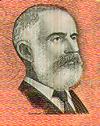 On 29 Jan 1850, Lawrence Hargrave was born, an Australian aeronaut and inventor made important studies of wing surfaces for flying-machines, and invented the box kite. In this excerpt from Progress in Flying Machines (1894) you can learn more than you probably knew before about Flying-Machine Model and Kite Inventions. The illustrations show variaties of kite design that will surprize you, too. On 29 Jan 1850, Lawrence Hargrave was born, an Australian aeronaut and inventor made important studies of wing surfaces for flying-machines, and invented the box kite. In this excerpt from Progress in Flying Machines (1894) you can learn more than you probably knew before about Flying-Machine Model and Kite Inventions. The illustrations show variaties of kite design that will surprize you, too. |
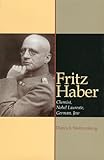 On 29 Jan 1934, Fritz Haber died, a German physical chemist, winner of the Nobel Prize for Chemistry (1918) for his development of a method of synthesizing ammonia (1909) directly from nitrogen and hydrogen. This led to commercial large-scale production of nitrogen fertilizer. His ardent patriotism had led him to develop poison gases for chemical warfare in WW I. Yet Haber, a Jew by birth, was exiled from his homeland in 1933 by the Nazi party and died shortly after. Today's Science Store pick is: Fritz Haber: Chemist, Nobel Laureate, German, Jew: A Biography, by Dietrich Stoltzenberg, whose original work is here abridged and translated into English. The biography of Haber is about a complex man. His process for synthesis of ammonia has helped feed billions of people with artificially-fertilized food production sythesized using the chemically reclusive nitrogen from the air. Yet the same process produces the raw chemicals necessary for explosives. So together with the chemical weapons of WW I and the explosives of wars thereafter, he has contributed to the deaths of millions. Whether you are interested in the history of chemistry, or the activities of the scientist during war, there is much in this book to hold your attention. It is available New from $40.00. Used from $26.88. (As of time of writing.). On 29 Jan 1934, Fritz Haber died, a German physical chemist, winner of the Nobel Prize for Chemistry (1918) for his development of a method of synthesizing ammonia (1909) directly from nitrogen and hydrogen. This led to commercial large-scale production of nitrogen fertilizer. His ardent patriotism had led him to develop poison gases for chemical warfare in WW I. Yet Haber, a Jew by birth, was exiled from his homeland in 1933 by the Nazi party and died shortly after. Today's Science Store pick is: Fritz Haber: Chemist, Nobel Laureate, German, Jew: A Biography, by Dietrich Stoltzenberg, whose original work is here abridged and translated into English. The biography of Haber is about a complex man. His process for synthesis of ammonia has helped feed billions of people with artificially-fertilized food production sythesized using the chemically reclusive nitrogen from the air. Yet the same process produces the raw chemicals necessary for explosives. So together with the chemical weapons of WW I and the explosives of wars thereafter, he has contributed to the deaths of millions. Whether you are interested in the history of chemistry, or the activities of the scientist during war, there is much in this book to hold your attention. It is available New from $40.00. Used from $26.88. (As of time of writing.). | | For picks from earlier newsletters, see the Today in Science History Science Store home page. | |
 | Workers must root out the idea that by keeping the results of their labors to themselves a fortune will be assured to them. Patent fees are so much wasted money. The flying machine of the future will not be born fully fledged and capable of a flight for 1,000 miles or so. Like everything else it must be evolved gradually. The first difficulty is to get a thing that will fly at all. When this is made, a full description should be published as an aid to others. Excellence of design and workmanship will always defy competition. - Lawrence Hargrave, Australian aeronaut and inventor (born 29 Jan 1850).  |
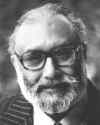 | It is good to recall that three centuries ago, around the year 1660, two of the greatest monuments of modern history were erected, one in the West and one in the East; St. Paul�s Cathedral in London and the Taj Mahal in Agra. Between them, the two symbolize, perhaps better than words can describe, the comparative level of architectural technology, the comparative level of craftsmanship and the comparative level of affluence and sophistication the two cultures had attained at that epoch of history. But about the same time there was also created�and this time only in the West�a third monument, a monument still greater in its eventual import for humanity. This was Newton�s Principia, published in 1687. Newton's work had no counterpart in the India of the Mughuls. - Abdus Salam, Pakistani-British nuclear physicist (born 29 Jan 1926).  |
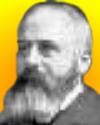 | Dermatology ... this young daughter of medicine ... - Paul Gerson Unna, German dermatologist (died 29 Jan 1929).  |
| Before you look at today's web page, see if you can answer some of these questions about the events that happened on this day. Some of the names are very familiar. Others will likely stump you. Tickle your curiosity with these questions, then check your answers on today's web page. |
 | Abdus Salam, born 29 Jan 1926, was a Pakistani nuclear physicist who was one of three men that shared the 1979 Nobel Prize for Physics for independently formulating a theory explaining the underlying unity of the weak nuclear force and a certain other fundamental force.
 What is other related fundamental force? |
| On 29 Jan 1773, Friedrich Mohs was born, a German mineralogist who devised the Mohs scale.
 To what is the Mohs scale applied? |
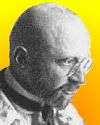 | Fritz Haber (1868-1934) was a German physical chemist, winner of the Nobel Prize for Chemistry (1918) for his development of a method of synthesizing ammonia (1909). This method had commercial potential in the large-scale synthesis of fertilizer.
 What were the raw materials used in the Haber process? |
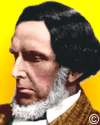 | Robert Mushet (1811-1891) was an English metallurgist developed a method of manufacturing steel (1856) by the addition of a certain substance, which improved on the Bessemer process. He produced steel that was more malleable, making durable rails that replaced the use of cast iron for railways.
 What substance did Mushet add to produce his malleable steel? |
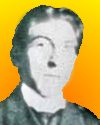 | On 29 Jan of a certain year, �mil H. Grubbe, a Chicago researcher, became the first known to administer x-ray radiation treatment for the recurrent breast cancer of a fifty-five-year-old woman. Grubbe tried radiation as a tool against cancer after he suffered a radiation burn while experimenting with X-rays.
 In which decade did Grubbe make this first attempt at using x-rays against cancer? |
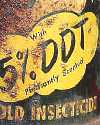 | On 29 Jan 1958, The Boston Herald printed a letter from Olga Owens Huckins attacking a certain pesticide as dangerous. Huckins was a friend of Rachel Carson, and also sent a personal letter to her, which together prompted the writing of Carson's book Silent Spring.
 What was the pesticide being criticized? |
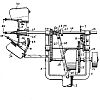 | On 29 Jan 1924, Carl R. Taylor was issued a U.S. patent for a “machine for forming thin, freshly baked wafers while still hot” into shaped containers. Multiple dies were designed on a turntable, such that when formed, the product had time to cool and harden before rotating into position for release. This was the first U.S. patent for such a product.
 What was the intended use for these cones? |
When you have your answers ready to all the questions above, you'll find all the information to check them, and more, on the January 29 web page of Today in Science History. Or, try this link first for just the brief answers.
Fast answers for the previous newsletter for January 28: . |
 If you enjoy this newsletter, the website, or wish to offer encouragement or ideas, please send feedback by using your mail reader Reply button. If you enjoy this newsletter, the website, or wish to offer encouragement or ideas, please send feedback by using your mail reader Reply button.
Your click on a StumbleUpon, Google+ or Facebook social button on the site webpages is also a welcome sign of appreciation. Thank you for using them. |
To find citations for quotations go to the corresponding webpage by clicking on the “quotes” balloon icon. Sources for the thumbnails appear on today's webpage with the corresponding item.
� This newsletter is copyright 2014 by todayinsci.com. Please respect the Webmaster's wishes and do not put copies online of the Newsletter � or any Today in Science History webpage. (If you already have done so, please remove them. Thank you.) Offline use in education is encouraged such as a printout on a bulletin board, or projected for classroom viewing. Online, descriptive links to our pages are welcomed, as these will provide a reader with the most recent revisions, additions and/or corrections of a webpage. For any other copyright questions, please contact the Webmaster by using your mail reader Reply button. |
--
If you do not want to receive any more newsletters,
Unsubscribe To update your preferences and to unsubscribe visit
this link 


 On 29 Jan 1850, Lawrence Hargrave was born, an Australian aeronaut and inventor made important studies of wing surfaces for flying-machines, and invented the box kite. In this excerpt from Progress in Flying Machines (1894) you can learn more than you probably knew before about Flying-Machine Model and Kite Inventions. The illustrations show variaties of kite design that will surprize you, too.
On 29 Jan 1850, Lawrence Hargrave was born, an Australian aeronaut and inventor made important studies of wing surfaces for flying-machines, and invented the box kite. In this excerpt from Progress in Flying Machines (1894) you can learn more than you probably knew before about Flying-Machine Model and Kite Inventions. The illustrations show variaties of kite design that will surprize you, too. 



 What is other related fundamental force?
What is other related fundamental force?  To what is the Mohs scale applied?
To what is the Mohs scale applied? 
 What were the raw materials used in the Haber process?
What were the raw materials used in the Haber process? 
 What substance did Mushet add to produce his malleable steel?
What substance did Mushet add to produce his malleable steel? 
 In which decade did Grubbe make this first attempt at using x-rays against cancer?
In which decade did Grubbe make this first attempt at using x-rays against cancer? 
 What was the pesticide being criticized?
What was the pesticide being criticized? 
 What was the intended use for these cones?
What was the intended use for these cones?  If you enjoy this newsletter, the website, or wish to offer encouragement or ideas, please send feedback by using your mail reader Reply button.
If you enjoy this newsletter, the website, or wish to offer encouragement or ideas, please send feedback by using your mail reader Reply button. 

Δεν υπάρχουν σχόλια:
Δημοσίευση σχολίου